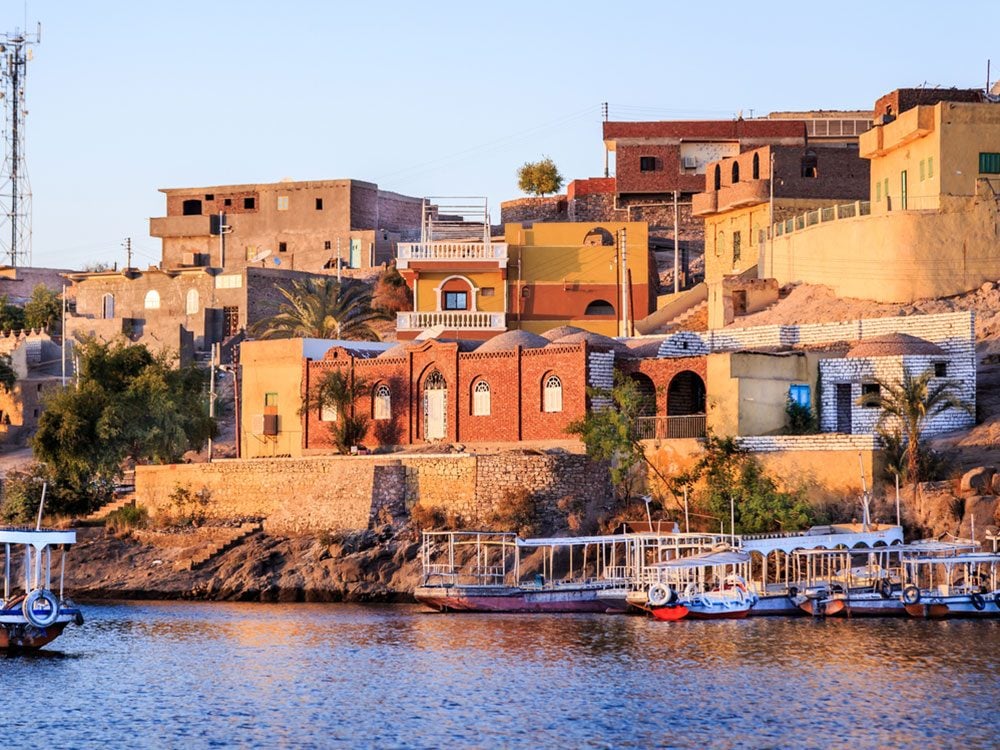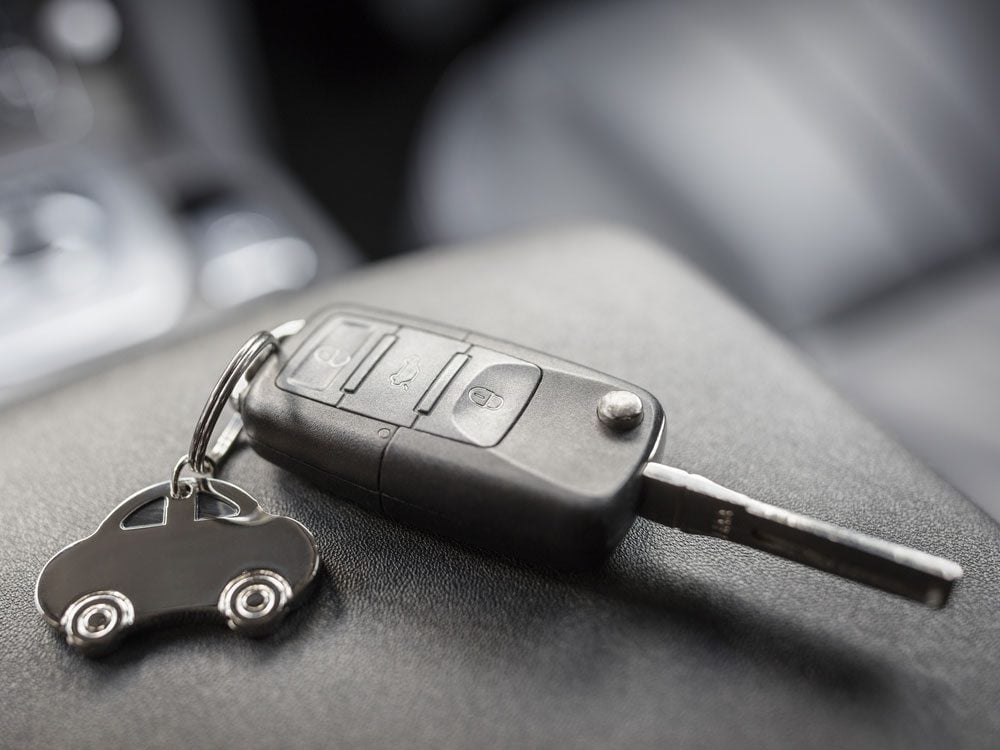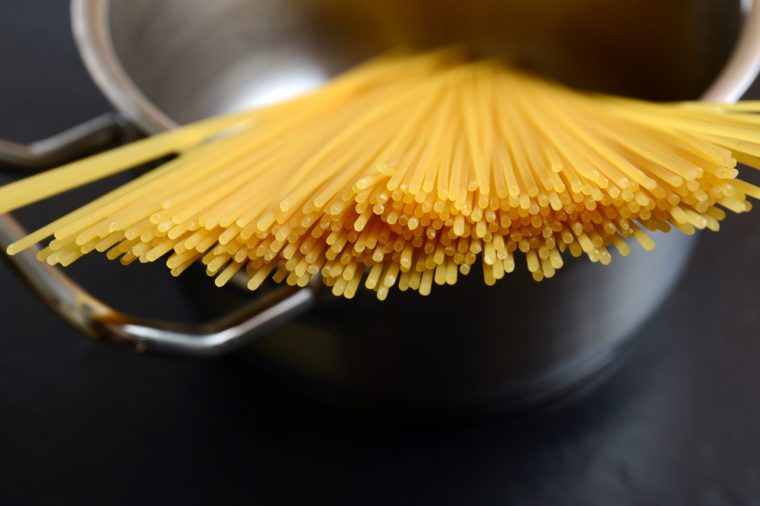
If you live with arthritis, you know that it affects more than just your joints. The pain goes beyond the morning stiffness, the swelling, the tenderness that can last for days on end. Pain hits you emotionally, be it by reducing your desire to socialize or by affecting your mood. Arthritis can limit your quality of life and stop you from pursuing what you love—hobbies, travel, enjoying time with family and friends—in order to avoid the pain.
You are not alone: according to the Arthritis Society, 1 in 5 Canadians live with arthritis*. While there is no cure, there are ways to relieve and prevent arthritis pain. Here are some tips for pain management to help you take back your day—and your life.
NATURAL REMEDIES
For natural ways to relieve pain in the short term, think heat and cold. Heat methods, such as hot baths and showers, electric blankets and mitts, or heating pads can help relax tight, aching muscles. Cold methods, such as compresses, cold packs, or even bags of frozen vegetables can help numb the area to reduce pain. Remember to be gentle: don’t use heat or cold methods for longer than 15 to 20 minutes at a time.
TOP TIPS:
• For relief from pain and stiffness, time your use of heat or cold strategically, like after you wake up in the morning and before exercising.
OVER-THE-COUNTER (“OTC”) MEDICATIONS
When considering OTC options, look for a medication that is fast-acting. TYLENOL® Arthritis Pain is a good choice—thanks to the patented bi-layer caplet, the first layer starts working fast, and the second gives you extended relief—for up to 8 hours. Plus, it’s gentle on the stomach lining. It’s no wonder that TYLENOL® Arthritis was voted Canada’s Most Trusted Brand of arthritis pain reliever for five years in a row**.
TOP TIPS:
• Try TYLENOL® Muscle Aches & Body Pain to help with your tough muscle, body, and joint pain. It provides relief that lasts for up to 8 hours. (To be sure any medication is right for you, always read and follow the label.)
PREVENTIVE STRATEGIES
Regular exercise is a great way to prevent arthritis pain; it helps by strengthening your muscles, increasing flexibility and reducing swelling. It can also give you more energy, which goes a long way to helping you make it through the day. Exercise is a long-term pain management strategy, so find a sport or workout you love and get to it! Be sure to consult with your doctor before beginning an exercise program and start slowly—overdoing it can lead to more pain, not less.
TOP TIPS:
• Always warm up before and cool down after physical activity. For some easy back, knee, hip and hand exercises, visit www.Tylenol.ca.
TYLENOL® is a registered trademark of Johnson & Johnson
* The Arthritis Society. http://www.arthritis.ca (accessed May 15, 2018)
** 2018 Reader’s Digest Trusted Brand Survey
Trusted Brand is a registered trademark of Reader’s Digest

Ever wonder why the dollar sign is an “S”?
Our sign for “cent,” a lowercase c with a line through it, makes cents—sorry, sense. But our much-more-widely-used currency symbol, the sign for the dollar, is based on the letter…S? How did that happen?
You may have heard that the dollar sign started as a U on top of an S, as in “United States.” Over time, the bottom of the U disappeared, leaving the S with two lines through it, which was eventually simplified to only one line. But this isn’t the true story. In fact, this symbol was actually used for another form of currency before the U.S. dollar. Here are some other history lessons your teacher lied to you about.
The story behind this familiar monetary symbol begins not in North America but in Europe. In the sixteenth century, Spanish explorers found massive quantities of silver in the South American lands they had just conquered, lands that would later become Mexico, Peru, and Bolivia. Rich with silver, Spain began minting massive quantities of silver coins called pieces of eight, or peso de ocho, “pesos” for short. The silver supply in Europe was dwindling at this time, so the Spanish peso became the primary coin for international trade.
The previous coin to hold that title was a silver coin called a joachimsthaler. The final two syllables of this mouthful of a name are actually where the word “dollar” comes from! (Here are six more words you’re probably pronouncing wrong.) So as the peso replaced this coin, it earned the nickname “the Spanish dollar.” Here are some more surprising facts most people don’t know.
As the American colonies evolved, trade between Spanish Americans and English Americans became common. Merchants recording trade transactions wanted to make their lives easier by using an abbreviation for “pesos” rather than writing out the whole word. So they chose a P with a superscript S (ps), which became a P and an S overlapping, which became an S with only the stem of the P. Yup, you guessed it—an S with a line through it.
These symbols first appeared in record documents around 1770. So this symbol was around before the United States was even called the United States, a clear nail in the coffin for the “U.S.” theory. However, though the symbol comes from a Spanish coin, it was created by Americans. The English American colonists were the first to use the symbol. Since it was (in a way) already a dollar sign (for the “Spanish dollar”), and since one American dollar originally had the same value as one peso, it would eventually become the sign for the American dollar. Next, learn the real reason some English words have silent letters.
[Sources: History.com, TodayIFoundOut.com, Observation Deck]

Which tourist destination will you choose?
Where can you snorkel with manatees, explore ancient civilizations and even go sandboarding?
Welcome to Egypt. And if you’re already booking a flight, you’re not alone. The Middle Eastern nation just topped the list of the world’s fastest growing tourist destinations, Forbes reported. According to the United Nations World Tourism Organization’s most recent report, Egypt experienced 55.1 per cent growth in the number of visitors from 2016 to 2017.
Known as the Cradle of Civilization, Egypt is home to the Great Sphinx and the Great Pyramid of Giza. You can also explore the bustling bazaars of Cairo or take a cruise down the Nile River. More of an adventure seeker? Egypt has also become a destination for serious windsurfers and scuba divers who explore its coral reefs. (Don’t miss these “tourist traps” around the world that are actually worth visiting.)
Travellers to Egypt hit a high point in 2010 with 14.7 million visitors—beating the number of tourists that visited Paris that year. But tourism took a hit in 2011, after a revolution that toppled the government of longtime leader Hosni Mubarak, and again in 2015, when a Russian airliner was shot down over the Sinai Peninsula.
But since Abdel Fattah El-Sisi was elected president in 2013, Egypt has been peaceful. And more people are visiting the country again, with about 8.3 million tourists in 2017 and more anticipated for 2018.
Here are the other destinations with topped the list of increased visits from tourists:
- Togo: 46.7 per cent. This West African nation on the Gulf of Guinea is known for its white beaches, markets, and its friendly residents.
- Vietnam: 29.1 per cent. In the bustling capital city Hanoi, you can wander around the Old Quarter, explore Nha Tho Cathedral—the Vietnamese equivalent of the Notre Dame Cathedral in Paris—and take in the Hanoi Hilton, the prison that once housed the late U.S. Senator John McCain.
- Georgia: 27.9 per cent. Nestled between Russia, Europe, and the Middle East, this former Soviet satellite is known as a budget destination with centuries-old monasteries, mountain villages, and traditional wines.
- Palestine: 25.7 per cent. Home to the West Bank and Gaza Strip, this occupied territory contains the historic religious cities of Bethlehem, Jerusalem, Jericho and Hebron.
- Niue: 25.4 per cent. Swim with dolphins and explore the coral reefs in the clear waters off this tropical island northeast of New Zealand. Or poke around what may be the most extensive cave system in the South Pacific.
- Nepal: 24.8 per cent. Tourism is big business in this country in the Himalayan mountains, which is home to Mount Everest. It’s also the birthplace of Gautama Buddha and the capital city of Kathmandu is filled with historic temples.
- Israel: 24.6 per cent. Featuring beautiful beaches along the Mediterranean and lots of nightlife, Israel’s capital city Tel Aviv is known as “the Mediterranean capital of cool.” You can also explore Israel’s religious heritage, with tours of Jerusalem, Galilee and the Dead Sea.
- Northern Mariana Islands: 24.3 per cent. These 15 idyllic islands just north of Guam are a boon for history buffs. Tour the archaeological sites of the indigenous Chamorro people or explore buildings from World War II, including a Japanese lighthouse.
- Iceland and Turkey (tie): 24.1 per cent. Iceland’s fjords, spas and waterfalls have made it a popular destination with tourists, while Turkey’s beaches along the Black Sea have long attracted visitors.
Next, find out the best places to visit, according to your zodiac sign.

Veteran Profile: Demeter George Eugene Mulnar
Born on July 20,1922, in Szekesfehervar, Hungary, Demeter later served as a reservist with the South Alberta Light Horse Armoured Regiment.
“I had no idea what was happening. I walked into a room where there were tables surrounded by tables. I prepared my papers. Then reporters began to walk in, and then the German Generals came along.”
He enlisted on May 8, 1942, and saw active duty. As he was fluent in German, he was trained as an officer. On May 5, 1945, he acted as interpreter and sat with Canadian Lt-General Charles Foulkes and Maj-General Huntly Ketches. Across the table were German officers Col-General Blaskowitz and his Chief of Staff Paul Reichelt, who were surrendering all German fighting forces in Holland.
For more profiles by Veterans Voices of Canada, click here.

First customer’s call
Help Line: General Motors help line. How can I help you?
Customer 1: I got in my car and nothing happened!
Help Line: Did you put the key in the ignition and turn it?
Customer 1: What’s an ignition?
Help Line: It’s a starter motor that draws current from your battery and turns over the engine.
Customer 1: Ignition? Motor? Battery? Engine? Why must I know all of these technical terms just to use my car?
(Don’t miss the 15 craziest cars ever built.)
Second customer’s call
Help Line: General Motors help line. How can I help you?
Customer 2: My car ran fine for a week, and now it won’t go anywhere.
Help Line: Is the gas tank empty?
Customer 2: Huh? How do I know?
Help Line: There’s a gauge on the front panel, with a needle and markings from E to F. Where is the needle pointing?
Customer 2: I see an E but no F.
Help Line: The F is to the right of the E.
Customer 2: To the right of the E is V.
Help Line: A V?
Customer 2: Yeah, there’s a C, an H, the first E, then a V, followed by R, O, L—
Help Line: That’s the front of the car. When you sit behind the steering wheel, that’s the panel…
Customer 2: That steering wheel thingy—is that the round thing that honks the horn?
Help Line: Yes, among other things.
Customer 2: The needle’s pointing to E. What does that mean?
Help Line: It means that you have to visit a gasoline vendor and purchase more gasoline. You can install it yourself or pay the vendor to install it for you.
Customer 2: What?! I paid $32,000 for this car! Now you tell me that I have to keep buying more components? I want a car that comes with everything built in!
(Find out the strangest things mechanics have found in cars.)
Third customer’s call
Help Line: General Motors help line. How can I help you?
Customer 3: Your cars stink!
Help Line: What’s wrong?
Customer 3: It crashed! I wanted to go faster, so I pushed the accelerator pedal all the way to the floor. It worked for a while, and then it crashed—and now it won’t even start up!
Help Line: I’m sorry, sir.
Customer 3: I was just following your stupid manual. It said to make the car go, put the transmission in D and press the accelerator pedal. Now it crashed.
Help Line: Didn’t you attempt to slow down so you wouldn’t crash?
Customer 3: How do you do that?
Help Line: That’s on page 14 of the manual. The pedal next to the accelerator.
Customer 3: I don’t have all day to sit around and read this manual.
Help Line: Of course not. What would you like us to do?
Customer 3: I want you to send me one of the latest versions that goes fast and won’t crash anymore.
Here’s why you need to wrap your car key fob in foil.

The secret hidden in Meghan Markle’s wedding veil
Prince Harry and Meghan Markle, the Duke and Duchess of Sussex, married on May 19, 2018, and the world is still abuzz with excitement over the ceremony. No one can seem to get over the breathtaking outfits, the moving music, and, of course, the undeniably palpable connection between the bride and groom.
Now, thanks to a clip from the upcoming documentary Queen of the World, the world knows another small but important detail about the bride: She hid her “something blue” in her veil.
In the video, the Duchess sees her wedding dress and veil for the first time since the big day. As she inspects the veil, she reveals that there’s a piece of blue fabric stitched inside. “It was my something blue,” she says. “It’s fabric from the dress I wore on our first date.”
This incredibly sweet and romantic gesture shows just how meaningful that first meeting was to Meghan. (The couple was set up on a blind date by their mutual friend Violet von Westenholz, a PR executive at Ralph Lauren.) We already knew the veil had special significance. Custom made by Givenchy’s Clare Waight Keller, the embroidered design on the 16-foot veil features 53 flowers representing each country in the Commonwealth and a California poppy, the official flower of Meghan’s home state, combining the bride’s past with allusions to her future work as a member of the royal family. But with this new bit of information, it’s clear that the veil carried a deeper meaning: a reminder of her husband and the date that ignited their love.
What’s more, it’s NOT the “something blue” everyone thought she had. As the Duke and Duchess headed to their second wedding reception at Frogmore House, royal enthusiasts noticed that Meghan was wearing an aquamarine cocktail ring that previously belonged to Princess Diana. (You won’t believe who Meghan’s closest friend in the royal family is!)
Some speculate that the ring was a wedding-day gift from Prince Harry since his mother left all her jewelry to her two sons in her will. Yet the general consensus was that this tribute to Diana doubled as the bride’s something blue, even though it only made its appearance after the ceremony. What royal wedding watchers didn’t know was that the real “something blue” was in front of them the whole time, hidden in the wedding veil.
Next, find out the 13 royal rules Meghan Markle must now follow.

Should your key fob be wearing foil?
Put tinfoil over your head and you’re crazy, but if you put tinfoil around your car key fob, you’re a genius. (Here are seven car maintenance jobs you can do yourself.)
Turns out thieves can use devices that will amplify fob signals to cars or copy the code to get into a vehicle. (Find out how the colour of your car affects your chances of getting into an accident.)
So why wrap your car keys in foil? Well, your car waits for a signal from the fob and thieves can grab fob signals. But if your car key fob is wrapped in tinfoil, it will decrease the signal.
Not only should you keep your car keys in foil, you should do it at home, too. Toss your keys into an old coffee can to prevent someone from stealing your car key fob’s signal.
Next, if you own any of these 10 cars, it’s way more likely to get stolen.

The right way to break pasta
Breaking spaghetti noodles in half should be a fairly simple feat. Yet no matter how hard you try, that clean break is almost never achievable. Small pieces of dry pasta always scatter onto your kitchen floor or under your stove.
But don’t feel bad if you could never figure out why your spaghetti shattered (or how to stop it). Not even Nobel Prize-winning physicist Richard Feynman could figure it out when he studied spaghetti in the 1990s. Finally, in 2005, researchers Sebastien Neukirch and Basile Audoly discovered that when you bend a dry, thin noodle, a vibration wave is sent from the top of the curve throughout the rest of the noodle. This “snap-back” vibration results in pieces flying around your kitchen. Neukirch and Audoly won an Ig Nobel Prize, a parodied version of the real Nobel Prize, for their breakthrough (pun intended). Still, no one knew how to break pasta the correct way—until recently.
With the research from Neukirch and Audoly as precedent, two students at the Massachusetts Institute of Technology, Ronald Heisser and Edgar Gridello, spent over a month seeing if there was any way to avoid this effect, the Washington Post reports. Enlisting the help of another MIT graduate student, Vishal Patil, they found that unlike the “snap-back” wave, a “twist wave” causes a quicker vibration that stops parts of your spaghetti from going rogue. The twist wave occurs when you literally twist the dry noodle and then bend it.
However, twisting spaghetti in this manner requires a lot of power, so Heisser and Patil created a mechanical fracture device, aka the ultimate spaghetti breaker. The contraption twists dry spaghetti almost 360 degrees and bends it in half slowly. For those who don’t have access to this machine (essentially everyone except these MIT geniuses), try twisting and bending dry pasta by hand. You may finally have two rare, perfect halves of a noodle.
Next, don’t miss these eight other ways you’re cooking pasta wrong.